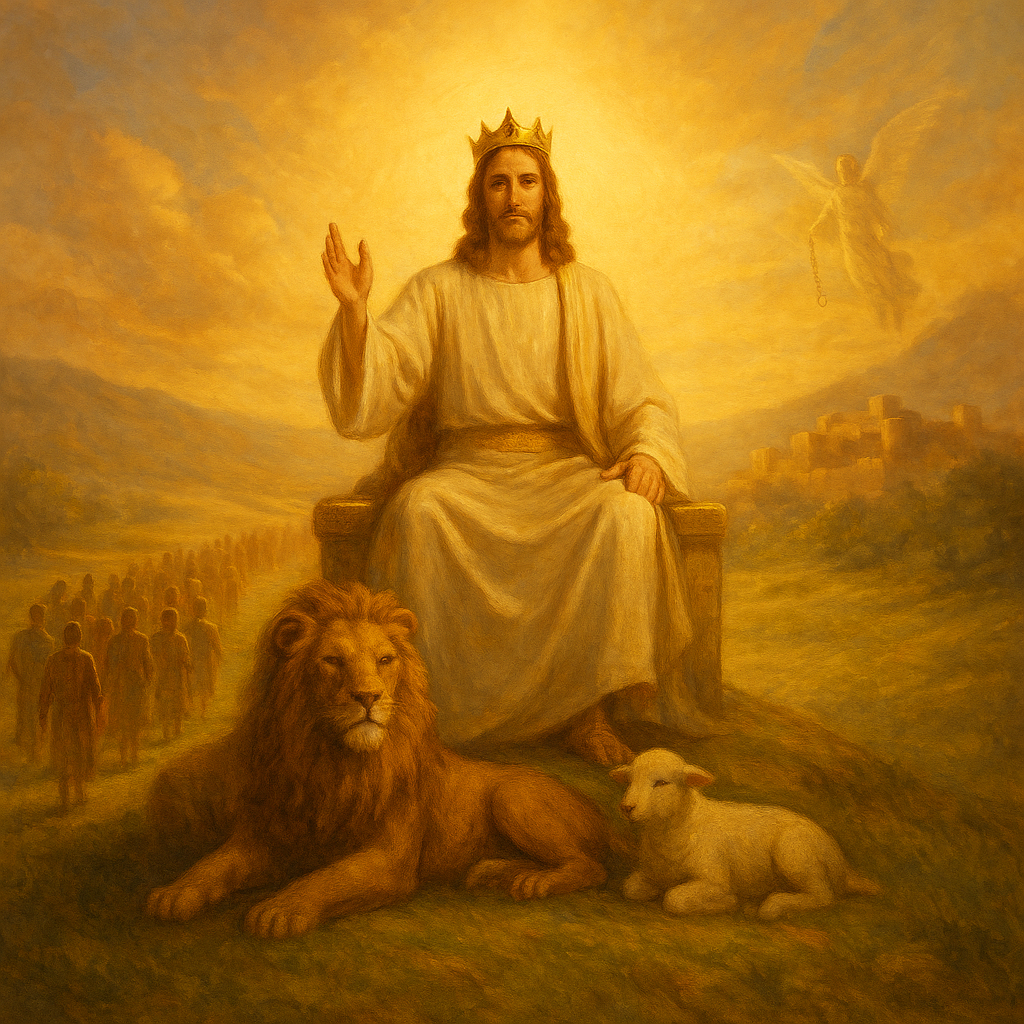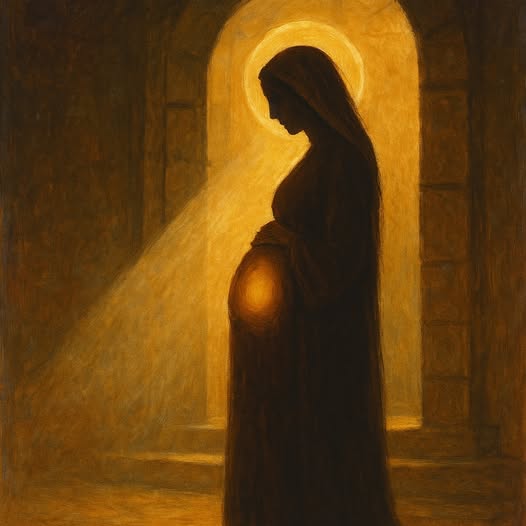
When John writes about the Millennium in Revelation 20, he is not introducing a strange new doctrine. He is revealing the climactic fulfillment of a theme woven throughout Scripture, the reign of the Messiah over a restored world, the vindication of God’s people, and the final subduing of all enemies. The “thousand years” is mentioned explicitly only once, yet its reality is present in God’s promises to Abraham, the covenant with David, the visions of the prophets, and the sharpened hopes of Second Temple Judaism. This reign belongs to Jesus, the promised Son of David and Yahweh Himself in the flesh. Understanding the Millennium means seeing how it brings to completion the long conflict between Yahweh and every rival power.
The Vision in Revelation
In Revelation 20, John describes a sequence following the destruction of the beast and false prophet in chapter 19. Satan is bound for a thousand years, unable to deceive the nations. Thrones are set in place, and judgment is given to those who were faithful to Christ, including martyrs. These saints reign with Him during the Millennium. At its end, Satan is released for a final rebellion, swiftly crushed before the last judgment and the renewal of all creation.
Old Testament Roots
The hope of the Millennium grows from the soil of prophetic promises. Isaiah foresaw a day when the nations would stream to the mountain of the LORD, learning His ways and living in peace (Isaiah 2:2–4). Isaiah 11 depicts the Messiah ruling with perfect justice, restoring harmony to creation, and filling the earth with the knowledge of Yahweh. Zechariah envisioned the LORD reigning over all nations from Jerusalem (Zechariah 14).
These prophecies are not merely about righteous government; they are covenant promises anchored in God’s faithfulness. To Abraham, God promised blessing for all nations through his seed. To David, He promised a son who would sit on the throne forever. In the New Testament, these promises find their fulfillment in Jesus, who is both David’s heir and David’s Lord, Yahweh incarnate, ruling over the nations. The Millennium is the time when these promises are openly manifested in the world, not just spiritually realized but tangibly displayed.
Second Temple Period Expectations
By the Second Temple Period, Israel’s hopes for the Messiah’s reign had taken on a sharp edge, shaped by centuries under foreign powers. Writings such as the Psalms of Solomon, 1 Enoch, and the Dead Sea Scrolls looked for a Davidic king who would defeat oppressors, purify the temple, and bring lasting justice. These hopes were not merely political; they included the expectation that hostile spiritual powers would be subdued.
Some Jewish traditions anticipated a defined period of messianic rule before the final resurrection, often described as a Sabbath rest for the world after six thousand years. For the first Christians, steeped in these expectations, John’s vision of a thousand-year reign was not surprising. What was unexpected was the identity of the King, Jesus of Nazareth, crucified, risen, and revealed as Yahweh incarnate, who had already struck the decisive blow against the principalities and powers at the cross.
How Christians Have Understood the Millennium
Believers have always agreed that the Millennium belongs to Christ, but they have differed on how to interpret the “thousand years,” its timing, its nature, and how it relates to His return.
Premillennialism teaches that Christ will return before the Millennium, establishing a literal reign on earth. Revelation 19 and 20 are read as sequential: Christ’s return, the destruction of His enemies, the binding of Satan, and the reign of the saints with Christ from Jerusalem. The Millennium is the open fulfillment of Old Testament promises (Isaiah 11; Zechariah 14) and matches Second Temple hopes for a golden age, now realized in Yahweh-Messiah’s visible rule over a restored creation.
Amillennialism interprets the Millennium symbolically, as representing the present age between Christ’s first and second comings. Christ reigns now from heaven, and His people reign with Him spiritually. Satan’s “binding” is understood as a limitation preventing him from stopping the spread of the Gospel to the nations.
However, the continued activity of other spiritual powers, such as the rebellious bene elohim, who lost their formal authority at Christ’s ascension but remain active, and the demons, understood as the disembodied spirits of the Nephilim, raises questions about whether the “binding” in Revelation 20 can fully describe the present age. Their ongoing influence suggests that the binding envisioned by John may be more complete and visible than what is experienced now. Amillennialism views the Millennium as a present spiritual reality that will only be openly and universally manifested at Christ’s return.
Postmillennialism envisions the Millennium as a future era of Gospel triumph before Christ’s return. The nations are transformed as the Gospel spreads, willingly submitting to Christ’s authority. By the close of this period, Satan and his allies are rendered powerless before the King returns in glory. This view was especially popular in times of optimism about cultural transformation through the Gospel.
Though these views differ in their timelines and emphases, all agree that the Millennium belongs to Christ as Yahweh and Messiah, and that it ends with the final, public defeat of every rival power.
Conclusion
The Millennium is the bridge between the present age and the eternal state. It vindicates the saints who have suffered for Christ’s name, fulfills God’s promises to Abraham and David in a public and worldwide display, and previews the new creation of Revelation 21–22, when the curse is removed, death is no more, and God dwells with His people forever.
For believers, the Millennium is not a curiosity to be filed away in prophecy charts, but a promise that history is moving toward the open reign of our Messiah and God. It calls us to loyalty in the present, knowing that every rival will be brought under His feet. It gives courage to endure trials with the certainty of vindication. And it compels us to proclaim the Gospel, inviting all people to submit now to the King who will one day reign openly over every nation and realm.
Discussion Questions
- How do Old Testament prophecies about the Messiah’s reign shape our understanding of the Millennium in Revelation 20?
- In what ways did Second Temple Period expectations prepare early Christians to understand John’s vision of the thousand-year reign?
- How does each view of the Millennium (Premillennial, Amillennial, Postmillennial) interpret the “binding” of Satan, and what are the strengths and weaknesses of each interpretation?
- Why might the ongoing activity of other spiritual powers challenge the idea that the Millennium is fully realized in the present age?
- How should the promise of the Millennium influence the way we live and share the Gospel today?
Want to Know More?
- Beale, G. K. The Book of Revelation: A Commentary on the Greek Text. New International Greek Testament Commentary. Grand Rapids: Eerdmans, 1999.
– A highly respected academic commentary on Revelation with in-depth discussion of Revelation 20 and various Millennium interpretations. - Ladd, George Eldon. The Presence of the Future: The Eschatology of Biblical Realism. Grand Rapids: Eerdmans, 1974.
– A classic evangelical work explaining the Kingdom of God, already/not yet theology, and different views of the Millennium. - Heiser, Michael S. The Unseen Realm: Recovering the Supernatural Worldview of the Bible. Bellingham, WA: Lexham Press, 2015.
– Provides essential background on the bene elohim, the divine council, and the broader spiritual rebellion that factors into biblical eschatology. - Keener, Craig S. Revelation. NIV Application Commentary. Grand Rapids: Zondervan, 2000.
– Offers accessible yet scholarly insights into the structure and meaning of Revelation 20, with balanced treatment of interpretive options. - Bock, Darrell L., and Blaising, Craig A., eds. Three Views on the Millennium and Beyond. Counterpoints Series. Grand Rapids: Zondervan, 1999.
– Presents Premillennial, Amillennial, and Postmillennial perspectives, each defended by a scholar of that position, with responses from the others.





